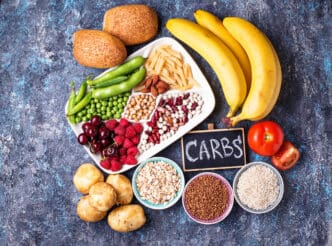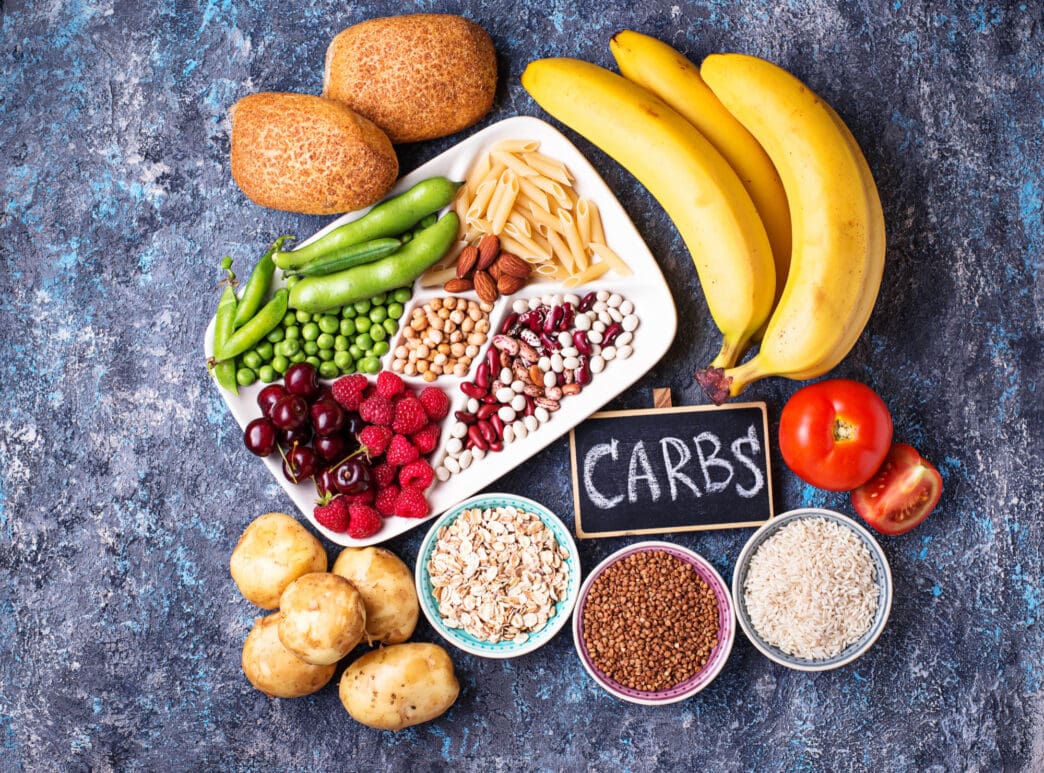A Quick Takeaway
- Modern carb-loading for endurance athletes has evolved beyond traditional methods, focusing on easily digestible, nutrient-dense carbohydrates, precise timing, and personalized plans to optimize glycogen stores without digestive distress.
- Key elements of this modern approach include consuming 8-12 grams of carbohydrates per kilogram of body weight in the 24-48 hours before a race, strategically reducing fiber intake, and embracing diverse carbohydrate sources.
- Effective carb-loading is intrinsically linked to proper hydration and electrolyte balance, particularly in challenging climates like Florida, and requires individualization through experimentation during training cycles.
The Story Behind the Trend
- Modern carbohydrate-loading strategies have evolved from traditional methods that often caused gastrointestinal distress, aiming to maximize muscle and liver glycogen stores for sustained energy during endurance events lasting over 90 minutes. This contemporary approach emphasizes evidence-based, personalized plans focusing on easily digestible, nutrient-dense carbohydrates, precise timing (24-48 hours pre-race), and strategic fiber reduction to optimize performance and prevent fatigue, especially for athletes competing in challenging climates like Florida’s.
How to Make It Work for You
- Modern carbohydrate-loading strategies, emphasizing easily digestible, nutrient-dense carbohydrates, precise timing, and personalized plans, are replacing traditional pasta-heavy methods for endurance athletes. This shift allows runners, particularly those in challenging climates like Florida, to optimize glycogen stores and sustain energy while significantly reducing digestive distress and fatigue, ultimately leading to enhanced performance and a more comfortable race experience.
The Community View
- Modern endurance athletes in Florida are adopting sophisticated, evidence-based carbohydrate-loading strategies that prioritize nutrient-dense, easily digestible carbohydrates, precise timing (24-48 hours pre-race), strategic fiber reduction, and personalized plans to maximize glycogen stores without digestive distress.
- The traditional approach to carb-loading, popularized decades ago, often involved several days of very low carbohydrate intake followed by high intake of simple starches like pasta, which frequently led to gastrointestinal distress, bloating, and a feeling of sluggishness.
Florida runners preparing for peak performance in Tampa are moving beyond the traditional pre-race pasta bowl, embracing sophisticated, evidence-based carbohydrate-loading strategies designed to optimize glycogen stores without the digestive distress. This modern approach focuses on nutrient-dense, easily digestible carbohydrates, precise timing, and personalized plans to ensure sustained energy and mitigate fatigue during endurance events in the Sunshine State’s unique climate. Athletes are discovering that strategic fueling, tailored to individual needs and race conditions, is the true secret to unlocking their full potential when the starting gun fires.
Understanding Carb-Loading: The Science of Fueling Endurance
Carbohydrate loading, often called “carb-loading,” is a nutritional strategy employed by endurance athletes to maximize the storage of glycogen in their muscles and liver. Glycogen is the body’s primary and most readily available source of energy during prolonged physical activity. When glycogen stores are full, athletes can sustain higher intensities for longer periods, delaying the onset of fatigue.
Glycogen: Your Body’s Energy Reserve
Our bodies convert carbohydrates from food into glucose, which is then either used immediately for energy or stored as glycogen. Muscles and the liver act as critical storage depots for this glycogen. For activities lasting longer than 90 minutes, such as marathons or half-marathons, these glycogen reserves become paramount.
Depleted glycogen stores lead to the dreaded “bonk” or “hitting the wall,” characterized by extreme fatigue and a significant drop in performance. Effective carb-loading aims to prevent this by supercompensating these stores, providing a deeper well of energy to draw from during the race.
The Traditional Approach and Its Pitfalls
The classic carb-loading method, popularized decades ago, often involved several days of very low carbohydrate intake followed by a few days of very high intake, usually featuring large quantities of simple starches like pasta. While effective in some ways, this method frequently led to undesirable side effects.
Many runners experienced gastrointestinal distress, bloating, and a feeling of sluggishness due to the sheer volume of food and fiber. The sudden shift in diet could also be uncomfortable and impractical, making race week more stressful than it needed to be. Modern science offers a more refined, athlete-friendly approach.
Beyond the Noodle: Modern Carb-Loading Strategies
Today’s understanding of sports nutrition emphasizes a more nuanced approach to carb-loading, moving away from the “more is always better” mentality. The goal is to maximize glycogen without compromising comfort or digestive health.
Focus on Digestibility and Nutrient Density
The key to modern carb-loading lies in selecting carbohydrates that are both easy to digest and provide good nutritional value. This means opting for complex carbohydrates that are lower in fiber closer to race day. High-fiber foods, while healthy, can cause gas and bloating when consumed in large quantities before an endurance event.
Examples include white rice, potatoes (peeled), sweet potatoes, ripe bananas, plain bagels, and oats. These foods provide ample glucose without overburdening the digestive system, allowing for efficient glycogen synthesis.
Timing is Everything: The 24-48 Hour Window
Research now suggests that the most critical period for carb-loading is typically the 24 to 48 hours leading up to the race. During this window, athletes should aim for a carbohydrate intake of 8-12 grams per kilogram of body weight per day. This concentrated effort, combined with a tapering of training volume, effectively tops off glycogen stores.
Spreading this intake across smaller, more frequent meals can also aid digestion and prevent feelings of excessive fullness. Rather than one massive meal, several moderate carb-rich meals and snacks are often more effective and comfortable.
Strategic Fiber Reduction
While fiber is crucial for overall health, reducing high-fiber foods in the final 24-48 hours before a race can significantly reduce the risk of gastrointestinal issues. This doesn’t mean eliminating all fiber, but rather choosing lower-fiber versions of carbohydrates.
For instance, opt for white rice instead of brown rice, peeled potatoes instead of skin-on, and refined grains over whole grains during this specific period. This temporary dietary adjustment prioritizes immediate race performance over long-term fiber intake, which can be resumed post-race.
Embracing Diverse Carbohydrate Sources
Modern carb-loading encourages a variety of carbohydrate sources beyond just pasta. This not only makes the diet more enjoyable but also ensures a broader spectrum of nutrients. For Florida runners, this might include locally available options.
Consider foods like jasmine rice, glutinous rice, quinoa (in moderation), ripe tropical fruits like mangoes and papayas, and various types of potatoes. Gluten-free runners have excellent options in rice, potatoes, gluten-free oats, and corn-based products, ensuring inclusivity for all dietary needs.
Hydration and Electrolytes: The Unsung Heroes
Effective carb-loading is inextricably linked with proper hydration. For every gram of glycogen stored, the body also stores approximately three grams of water. This means that as you load carbohydrates, you also need to increase your fluid intake to facilitate this storage process.
Drinking plenty of water, and potentially electrolyte-rich beverages, is crucial during the carb-loading phase, especially in Florida’s warm and humid climate. Adequate hydration ensures that the glycogen can be properly stored and accessed by the muscles during the race, optimizing its energy-providing benefits.
Tailoring Your Plan: The Individualized Approach
Perhaps the most significant “secret” to modern carb-loading is the emphasis on individualization. What works for one runner might not work for another. Factors like body weight, metabolism, dietary preferences, and digestive sensitivities all play a role.
Runners are encouraged to experiment with different carb-loading strategies during training cycles, not just before race day. This allows them to discover which foods and timing protocols work best for their own bodies, minimizing surprises when it truly counts.
Florida-Specific Considerations for Tampa Races
Running in Florida, particularly in a city like Tampa, presents unique environmental challenges that impact carb-loading and race-day fueling. The heat and humidity amplify the body’s demands, making strategic nutrition even more critical.
Heat, Humidity, and Hydration Needs
Florida’s high temperatures and humidity increase sweat rates and the risk of dehydration. This means that fluid and electrolyte intake must be a constant focus, not just during carb-loading but throughout race week and on race day. Sodium and potassium replenishment become especially important.
Runners should consider incorporating electrolyte-rich fluids alongside their carbohydrate sources during the loading phase. This proactive approach helps to maintain fluid balance and support optimal muscle function under challenging conditions.
Local Produce and Dietary Adaptations
Tampa’s access to fresh, local produce can also influence carb-loading choices. While fiber reduction is key close to race day, fruits like ripe bananas, oranges, and even certain squashes can be excellent carbohydrate sources earlier in race week.
Exploring local markets for fresh, easily digestible options like sweet potatoes or various rice varieties can add variety and ensure quality. Embracing the local food scene, with a mindful eye on preparation and ingredients, can make the carb-loading process more enjoyable.
Putting It All Together: Your Race Week Fueling
For Florida runners eyeing a strong performance in Tampa, the modern carb-loading strategy involves a combination of careful food selection, precise timing, and diligent hydration. It’s not about gorging on a single food group, but rather a calculated, scientific approach.
Start your carb-loading 24-48 hours before the race, focusing on easily digestible, lower-fiber carbohydrates. Maintain consistent hydration and electrolyte intake, especially given Florida’s climate. Most importantly, practice your fueling strategy during long training runs to ensure it works for you.
Fueling Your Best Performance
Moving beyond the simple pasta dinner, Florida runners are now armed with sophisticated carb-loading knowledge to conquer Tampa’s race courses. By understanding the science of glycogen, embracing diverse and digestible carbohydrate sources, and personalizing their approach, athletes can confidently step to the starting line. This meticulous attention to fueling, combined with smart training, ensures that every runner has the energy reserves needed to achieve their personal best and experience the thrill of peak performance.







